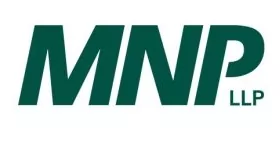On October 31 2013 the CRA announced changes to the Scientific Research and Experimental Development claim form. The modified T661 form accommodates legislative changes announced in the 2012 and 2013 budgets and the consolidated policy documents released in December 2012.
The revised form goes into effect as of January 1 2014.
There are three major changes that are reflected in this form:
- A new Part 9 for accommodating mandatory disclosure on the claim preparer and billing arrangement.
- A number of changes to Part 2 of the form to align with the consolidated policy documents released in December 2012.
- Accommodate legislative changes from the 2012 budget with regards to the elimination of capital and lease expenditures, revised proxy rate to 55% and the revised base tax credit rate from 20% to 15%.
1. Preparer disclosure on fees
If a claim preparer was engaged in the preparation of the SR&ED claim, the prescribed information in respect of SR&ED claim preparers has to be reported in the new Part 9. The information to be declared is:
- The name of each claim preparer that has accepted consideration to prepare or assist in the preparation of the SR&ED claim;
- The business number of the claim preparer;
- The billing arrangement code for the claim preparer as described in Form T661 Part 9 in the list of Billing arrangement codes;
- The billing rate;
- Any other billing arrangement (if other than those identified under Billing arrangement codes in the T661 Part 9); and
- The total fee paid, payable or expected to pay.
Certification attesting to whether a claim preparer was or was not engaged in any aspect of the preparation of the claim is required. A penalty of $1,000 may be assessed in respect of each SR&ED claim for which prescribed information about the claim preparer(s) is missing, incomplete or inaccurate.
The penalty applies in respect of claims filed on or after the later of January 1, 2014, and the day on which the enacting legislation receives royal assent.
2. Changes to Part 2 of the T661 form – Consolidated Policy
The revised form aligns with the requirements of the consolidated SR&ED policy documents released in December 2012.
The following changes have been made:
- Removed lines 223 to 229 in Part 2. [Location where work is performed]
- Removed lines 230 and 232 in Part 2. The relevant information from these lines is now requested on lines 620 and 622 in Part 7. [indication of SR or ED]
- Removed lines 235 to 238 in Part 2. [indication of new development or improvement of materials or processes]
- Consolidated former Sections B and C in Part 2 so that all claimants answer the same three questions in Section B. Also changed the order of the questions in Section B. [same three section of experimental development required for scientific research]
Form T661 version (12) may be submitted until December 31, 2013. Starting January 1, 2014, the CRA will accept only T661 version (13) for all tax years.
3. 2012 budget changes coming into effect as of January 1 2014.
The revised form accommodates legislative changes announced in the 2012 federal budget.
- Introduced notes in Parts 3 and 4 to advise that expenditures for capital property or the right to use capital property can no longer be claimed after December 31, 2013.
- Changed the descriptions for lines 350, 355, 390, and 504 to reflect that expenditures for capital property or the right to use capital property can no longer be claimed after December 31, 2013.
- Changed the description for line 820 to accommodate the 10% reduction in the prescribed proxy amount (PPA) for the number of days after December 31, 2013, in the tax year. As of 2013 the prescribed proxy amount (PPA) was reduced from 65% to 60% and as of January 1 2014 it is reduced to 55%.
- The base tax credit rate is reduced from 20% to 15% as of January 1, 2014. The enhanced rate of 35% continues to apply to qualifying corporations.
- Eligible sub-contracting expenditures inclusion rate had been reduced from 100% to 80% in 2013 and continues to apply going forward.
In Conclusion
The fee disclosure requirement is part of the CRA's wider effort at determining the efficiency and the degree of beneficial impact that this program has on innovation for Canadian businesses through technological advancements.
The changes to the form stemming from the consolidated policy documents reflect the renewed focus of the CRA towards the application of the rules that govern the program. While the program rules have not changed, the application of the guidelines in their consolidated policy will make non-compliant claims more easily detectable. Claimants should consult with their MNP SR&ED practitioners to gain a better understanding of how to respond to the new consolidated policy guidelines.
The content of this article is intended to provide a general guide to the subject matter. Specialist advice should be sought about your specific circumstances.


